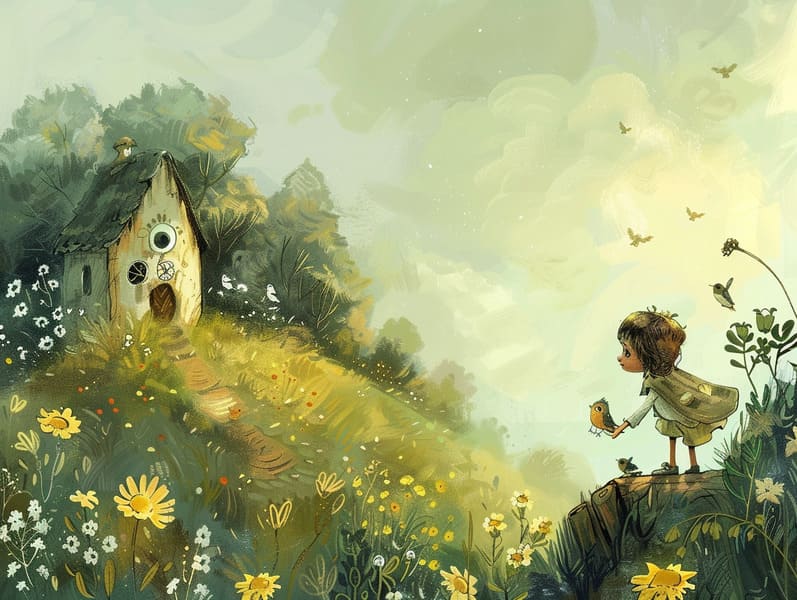The Evolution of Old Fairy Tales with the Invariable Beauty.
The Evolution of Old Fairy Tales with the Invariable Beauty.
Blog Article

Historical fairy tales have ancient roots. These narratives have been transmitted from one generation to the next well before they were ever published. They sprang from a variety of traditions, including African traditions. They were initially transmitted among elders, often carrying themes and messages aligned with the societal norms and beliefs of the time.
Jacob and Wilhelm Grimm, Jacob and Wilhelm Grimm, were among the first to assemble many of these beloved narratives. Their volume, "Grimm's Fairy Stories," included classics like "Ashenputtel," "Little Brother and Little Sister," and "Little Snow White," which have since become staples in the world of famous fairy tales. Similarly, the Danish author's fanciful fairy tales, such as "The Little Mermaid," and "The Duckling's Story," have floated into hearts worldwide, establishing their place in the pantheon of classic fairy tales.
Even though they are old, traditional fairy tales remain as relevant as ever, especially as bedtime stories for kids. These whimsical stories are now available in different formats, including vividly illustrated books, captivating animations, and internet fairy tales.
Their ongoing significance can be traced to several charming aspects:
Ethical Lessons: Ancient fairy tales often convey important moral lessons. Narratives like "The Boy Who Cried Wolf" teach the value of truthfulness, while "The Hare and the Tortoise" highlight the virtues of steadfastness and modesty. These narratives offer the young clear distinctions between good and bad, shaping their moral compass in a gentle yet profound way.
Kindness and Comprehension: Ancient fairy tales frequently showcase personalities facing difficulties and adversities, urging listeners to empathize with their struggles and back their triumphs. For instance, "Beauty's Beast" emphasizes the benefit of looking past the exterior to perceive the inner spirit of a individual, encouraging perception and discernment.
Cultural Comprehension: Many ancient fairy tales are rooted in the cultural contexts from which they originated. Engaging with these fairy tales can provide fascinating glimpses into different beliefs, nurturing a sense of global insight and appreciation.
Fantasy and Imagination: The extraordinary elements in fairy tales—magical kingdoms—engender children’s innovations. These tales lead readers to enchanted realms, enhancing imaginative ideas and a sense of curiosity that lasts a lifetime.
Traditional fairy tales are not only delightful but also illuminating. They serve as fascinating tools in nurturing various cognitive and affective skills in children. When old fairy tales are spoken, they promote speech development by showing new linguistic elements and detailed sentence structures. This practice also advances read more listening skills and focus, as the young keep up with the story, keen to see what happens next.
Furthermore, exploring the themes and characters of traditional fairy tales can develop thinking skills and cognitive skills. Little ones are led to see patterns, predict happenings, and comprehend cause and effect. These explorations also contribute to kids convey their thoughts and feelings, enhancing their emotional intelligence.
In today’s cyber age, the proliferation of online storybooks has made these narratives more accessible than ever. Web-based platforms and mobile apps present huge assortments of bedtime fairy tales that can be enjoyed or listened to anytime, anywhere. Fairy tales read out loud are particularly popular, presenting an enjoyable way for little ones to appreciate these charming tales. Audiobooks and read-aloud videos move characters and settings to life, often augmented by charming harmonies and instrumentals that improve the storytelling experience.
The persistent attraction of timeless fairy tales lies in their ability to change to present days while holding onto their central values. Contemporary modernizations of these tales often highlight more diverse figures and modern settings, making them pertinent to today’s audience. However, the basic principles of spirit, kindness, and rightness remain unchanged, continuing to appeal to young listeners of all ages.
Timeless fairy tales also offer a sense of warmth and comprehensibility. They supply a structured narrative with a apparent beginning, middle, and end, often winding up with the settlement of conflicts and the triumph of virtue over wickedness. This regularity can be solacing for kids, making available a sense of solidity in an always shifting world.
Traditional fairy tales continue to spellbind and educate new generations, maintaining their charm and importance in modern society. As children's bedtime stories, they confer upon a perfect blend of fantasy and learning, developing moral values, empathy, and creativity. The existence of web-based fairy tales and the well-liked nature of fairy tales narrated certify that these timeless tales remain accessible to new generations.
By keeping and narrating these stories, we continue to recognize the rich tapestry of fantasy and cultural heritage. Whether you are enjoying a beautifully illustrated book, perusing a web-based collection, or listening through an spoken story, the majesty of Grimm's fairy tales is always within reach. These fairy tales emphasize of the invariable essence of tales and its ability to bond us across epochs and places.
If you are delving into a colorful picture book, delving into a digital library, or listening to an read-aloud book, the radiance of old fairy tales is always within reach.
These fairy tales reveal of the timeless spell of tales and its ability to link us across eras and regions, casting a charm that delights and instructs alike.